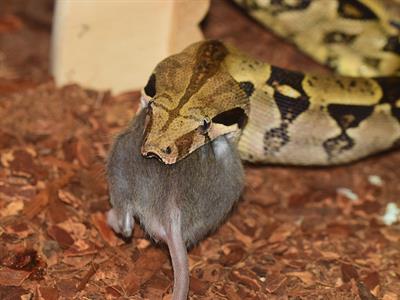
PUMPA - SMART LEARNING
எங்கள் ஆசிரியர்களுடன் 1-ஆன்-1 ஆலோசனை நேரத்தைப் பெறுங்கள். டாப்பர் ஆவதற்கு நாங்கள் பயிற்சி அளிப்போம்
Book Free DemoThe ecosystem comprises of:
- Living organisms or the biotic components include plants, microorganisms like bacteria, animals, including human beings.
- Non-living components or the abiotic components include physical factors such as air, water bodies like rivers, lakes, soil, rocks, light, temperature, rainfall, and the wind.

Biotic and abiotic factors of the ecosystem
We have seen in our earlier standards that biotic components can be classified as producers, consumers and decomposers based on their food dependency on one another.

Classification of biotic consumers
Producers:
Producers are autotrophs who prepare their food from solar energy, water, and carbon dioxide (\(CO_2\)). Solar energy is the primary and ultimate source of energy for almost all ecosystems. The producers trap and convert the solar energy to chemical energy in the form of food. Producers are also called transducers as they can change light energy into chemical energy.
The food is produced through the process of photosynthesis in the presence of chlorophyll. The prepared food is in the form of organic compounds like sugar and starch. Producers also maintain the \(CO_2\) and \(O_2\) balance in nature.
Example:
Green plants, algae and bacteria like cyanobacteria.

The types of organisms based on the nutrition
Consumers:
Consumers depend on the producers directly or indirectly for their food and thus are called heterotrophs. The consumers can be further classified as primary, secondary and tertiary consumers.
1. The primary consumers are herbivores which depend entirely on the producers directly for their food. Herbivores are also called first-order consumers.
Example:
Deers, elephants, cattle like cows, goats, sheep, and bulls.

Herbivorous animals
2. The secondary consumers depend on the primary consumers for their food and thus are indirectly dependent on the primary consumers.
Secondary consumers can be carnivores or omnivores. Carnivores depend only on animals, whereas omnivores depend on both plants and animals for their survival. Carnivores are also called second-order consumers.
Example:
Snakes, seals, squids, crabs, and eagles are examples of carnivores.

Snake
Humans, crows, monkeys, and bears are common examples of omnivores.

Crow
3. The tertiary consumers depend on the primary and the secondary consumers.
Example:
Larger carnivores or secondary carnivores like lions, wolves, leopards, and tigers are typical examples of tertiary consumers.

Lion
Decomposers:
The decomposers break down the dead remains and the waste products generated by organisms. They break down the complex organic substances into a simpler inorganic form which goes to the soil, which plants can reuse. Decomposers are also called saprotrophs as they feed on dead and decaying matter and organic wastes.
They are also called reducers as they remove or degrade the dead remains of organisms.
Example:
Bacteria, fungi like mushrooms, and earthworms.

Mushroom
Reference:
https://commons.wikimedia.org/wiki/File:Auto-and_heterotrophs.png